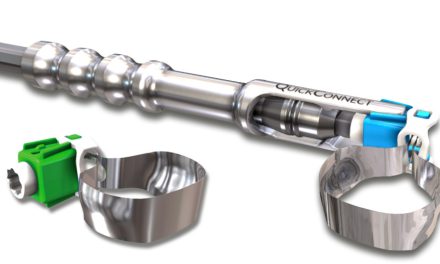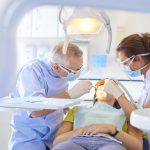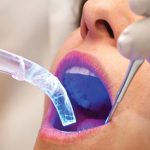Amongst the research and innovations in the field of oral care aimed at improving dental hygiene for people with disabilities and geriatric populations who struggle with manual dexterity include electric and adaptive toothbrushes with larger handles that are easier to grip, and which can be customised to an individual’s needs. Researchers are also exploring the potential of in-mouth sensors and dental wearables to monitor oral health. These devices could detect early signs of decay or gum disease and alert users or caregivers to seek dental care. Yet another innovative approach to oral care is the development of mouthpiece toothbrushes, which are designed to clean all teeth simultaneously. The user simply bites down on the mouthpiece and the device vibrates to clean the teeth.
In this research context, researchers at the University of Pennsylvania have taken a groundbreaking step in redefining oral care through the development of microscopic “robots” capable of replacing toothbrushes, dental floss, and mouthwash. A study funded by the NIDCR and published in ACS Nano showcases the promising potential of this innovative system, which could eventually be adapted for human use.
The primary aim of this research is to enhance oral care for individuals with disabilities and elderly populations who may struggle with manual dexterity required for routine oral care. According to dentist-scientist and senior author Hyun (Michel) Koo, DDS, PhD, this emerging technology addresses an unfulfilled need in the oral healthcare sector.
These “robots” are, in fact, nano-sized iron-oxide particles, each about 100 times smaller than a grain of pollen. When exposed to a magnetic field, these nanoparticles cluster together, forming bristle-like strands that align with the direction of the magnetic field. By carefully adjusting the magnetic field, the scientists can control the movements, stiffness, and length of the bristles.
Co-senior author and microrobotics engineer Edward Steager, PhD, explains that one of the advantages of utilising magnetic fields is their ability to penetrate tissues harmlessly at low levels, allowing the system to access hard-to-reach areas.
The researchers tested the effectiveness of these nano-robots on various surfaces, including 3D-printed models of human front teeth, actual human front teeth fixed on artificial gums, and sections of pig jaw containing teeth and gums. The microscopic robots demonstrated remarkable versatility, shifting from bristle-like extensions to floss-like strings that conformed to tooth surfaces and effectively cleaned between teeth.
Additionally, the robots possess the natural ability to initiate chemical reactions that release antimicrobial molecules, creating an on-site oral rinse. This dual-action mechanism enables the robots to break down biofilms, commonly known as plaque, while also killing bacteria within. The microscopic robots can also collect and analyse debris containing dead pathogens, potentially providing valuable information for predicting and diagnosing oral diseases and other health issues.
Before these nano-robots can be used in humans, clinical trials must be conducted. The research team plans to optimise the system, making it affordable and accessible for everyday use by designing prototypes that fit inside the mouth. The ultimate goal is to develop a programmable, fully automated system that adapts to each person’s unique oral cavity for personalised oral care.
In a related study published in the Journal of Dental Research, the researchers demonstrated that these microrobots could be guided magnetically through root canals to remove biofilms and potentially deliver drugs. This proof-of-concept study further expands the potential applications of this technology.
Besides dentistry, the scientists believe this technology could be employed in cleaning biofilm-contaminated catheters, surgical implants, and water pipes. As Steager comments, such groundbreaking research results open up new avenues and applications, making it an incredibly exciting development in the field of dental research.
These innovations represent exciting advancements in oral care that could greatly improve dental hygiene and overall health for us all, and especially for people with disabilities and older populations.
References
Surface Topography-Adaptive Robotic Superstructures for Biofilm Removal and Pathogen Detection on Human Teeth. Oh MJ, Babeer A, Liu Y, Ren Z, Wu J, Issadore DA, Stebe KJ, Lee D, Steager E, Koo H. ACS Nano. 2022 Jun 28. doi: 10.1021/acsnano.2c01950. Epub ahead of print. PMID: 35764312.
Microrobotics for Precision Biofilm Diagnostics and Treatment. Babeer A, Oh MJ, Ren Z, Liu Y, Marques F, Poly A, Karabucak B, Steager E, Koo H. J Dent Res. 2022 Aug;101(9):1009-1014. doi: 10.1177/00220345221087149. Epub 2022 Apr 21. PMID: 35450484.
Acknowledgement – https://www.nidcr.nih.gov/
Author
Michelle Mason













